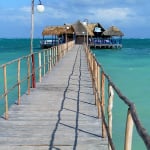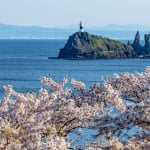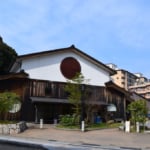Name: Shōkōkan Tokugawa Museum
Address: 1-1215-1 Migawa, Mito City, Ibaraki Prefecture
Official/Related Site URL: http://www.tokugawa.gr.jp/
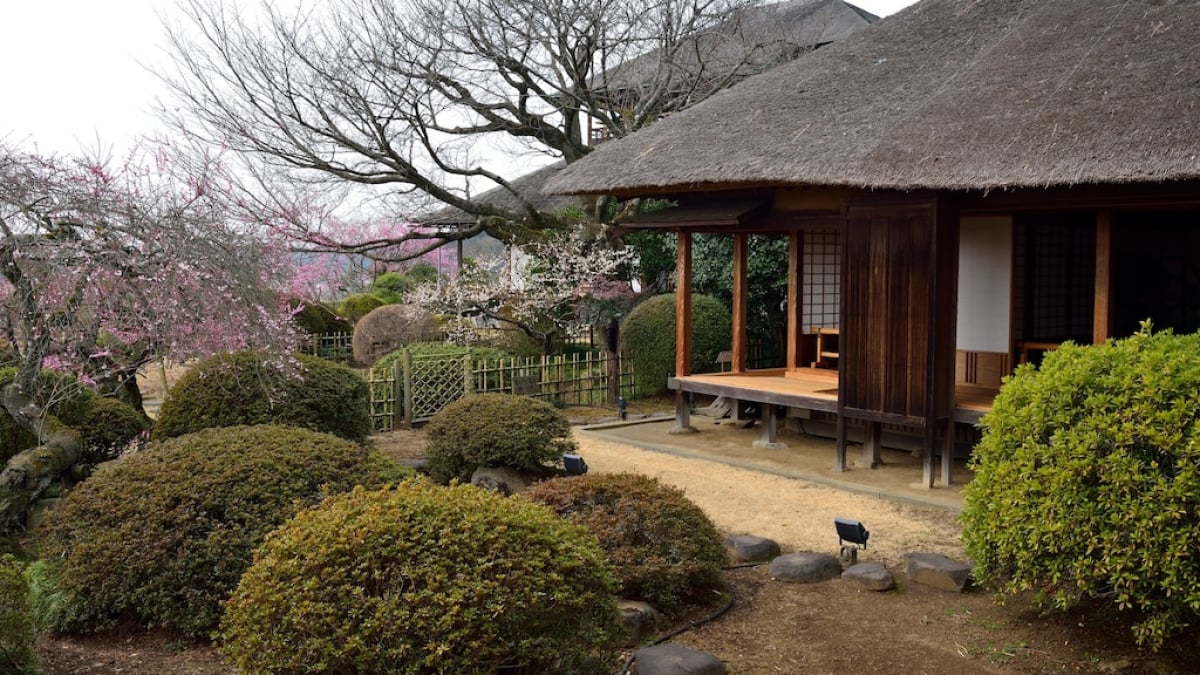
Ibaraki Prefecture, Rich in History Even Among Kanto Regions: 10 Must-Visit Spots
Among the Kanto region, Ibaraki Prefecture stands out with its long and rich history. The prefecture is home to numerous historical sites from ancient, medieval, and early modern periods, allowing visitors to truly feel the breath of history and romance of the past.
Here, we have carefully selected and introduced 10 must-visit historical spots that you definitely won’t want to miss!
table of contents
[x] close
Ibaraki Prefecture, Rich in History Even Among Kanto Regions: 10 Must-Visit Spots
- 1. Feel the History of Mito City, One of the Three Great Tokugawa Branches, at the "Tokugawa Museum"
- 2. Tsukuba Shrine on Mount Tsukuba, a Representative Mountain of Ibaraki Prefecture
- 3. Kairakuen, One of Japan’s Three Great Gardens, Proudly Representing Ibaraki Prefecture
- 4. A Power Spot! Kasama Inari Shrine, One of Japan’s Three Great Inari Shrines
- 5. “Rokkakudō” on the Izura Coast, a Scenic Spot Representing Ibaraki
- 6. Kōdōkan, a School Where Mito Domain Samurai Studied, Now a Historical Site
- 7. Kashima Jingū: A Historical and Spiritual Power Spot in Ibaraki Prefecture
- 8. “Ushiku Daibutsu”: Feel the Historical Grandeur through a Giant Buddha
- 9. A Power Spot Offering Both Hiking and Scenery in Ibaraki: The Ancient Government Site of Hirasawa Kanga
- 10. “Ibaraki Prefectural Museum of History”: A Place to Experience the Prefecture’s Past
- ◎ Summary
1. Feel the History of Mito City, One of the Three Great Tokugawa Branches, at the "Tokugawa Museum"
Mito City in Ibaraki Prefecture is famous as one of the three great branches of the Tokugawa family, alongside Owari and Kii. A place where you can feel the history of the Tokugawa family is the Tokugawa Museum.
This is a museum of great historical value that publicly exhibits books and historical materials handed down by the Mito Tokugawa family. Its collection includes around 60,000 items, offering endless fascination. You can also see the inrō (traditional case for seals and medicine) used by Tokugawa Mitsukuni, made famous by the TV drama “Mito Kōmon,” making it highly recommended. It’s a must-visit for history lovers.
This open and spacious museum also features a terrace café that makes visiting even more enjoyable. There’s also a shop where you can buy souvenirs related to the Mito Tokugawa family. Among the historical attractions in Ibaraki Prefecture, this is a valuable museum where you can feel the generations-long history of the Mito Tokugawa family. Admission is 1,200 yen (as of 2016), and it’s about a 10-minute taxi ride from Mito Station.
2. Tsukuba Shrine on Mount Tsukuba, a Representative Mountain of Ibaraki Prefecture
Mount Tsukuba, often mentioned alongside Mount Fuji, is a famous peak of Ibaraki Prefecture. The shrine is centered around the sacred Mount Tsukuba, which is a twin-peaked mountain made up of Mount Nantai and Mount Nyotai, each enshrining a deity. Mount Nantai is home to Izanagi-no-Mikoto, and Mount Nyotai enshrines Izanami-no-Mikoto. With a history dating back to ancient records such as the Fudoki and poems in the Man’yōshū, this is a historical site that history enthusiasts will surely love.
This rare shrine, where the two deities are united, is also well-known as a god of matchmaking. While Mount Tsukuba is famous as a scenic natural spot representing Ibaraki Prefecture, it also features thrilling locations like “Benkei Nanamodori,” a narrow path said to be so scary even the legendary warrior Benkei retreated.
In addition to hiking, there are ropeways and cable cars, and there are hot springs at the base of the mountain. Be sure to visit Mount Tsukuba and Tsukuba Shrine, both of which have developed along with Ibaraki’s history.
Name: Tsukuba Shrine
Address: 1 Tsukuba, Tsukuba City, Ibaraki Prefecture
Official/Related Site URL: http://www.tsukubasanjinja.jp/
3. Kairakuen, One of Japan’s Three Great Gardens, Proudly Representing Ibaraki Prefecture
Kairakuen, famous for its plum blossoms and counted as one of Japan’s three great gardens, is located in Mito City, Ibaraki Prefecture. It is a strolling-style garden created during the Edo period by the 9th feudal lord, Tokugawa Nariaki.
Inside the garden, there are many historically valuable spots. Notably, the Kobuntei, a renowned structure designed by Tokugawa Nariaki during the Edo period, still stands. You can also see other areas like the “Ume-no-ma” (Plum Room) in the inner palace, the wooden-floored corridor known as “Nurien,” and “Rakujurō,” a tower with a panoramic view of Lake Senba—offering a precious glimpse into Edo-period architecture.
The lush Mōsō bamboo grove on the western side of the garden is highly praised as a healing spot within Kairakuen. Every year from February to March, the Plum Blossom Festival is held here, drawing both tourists and locals. Plum-themed treats like plum soft-serve ice cream, plum yokan, century-old plum wine, and noshi-ume are all popular among visitors.
Name: Kairakuen
Address: 1 Tokiwamachi, Mito City, Ibaraki Prefecture
Official/Related Site URL: http://www.koen.pref.ibaraki.jp/park/kairakuen01.html
4. A Power Spot! Kasama Inari Shrine, One of Japan’s Three Great Inari Shrines
Kasama Inari Shrine, located in Kasama City, is one of the most well-known power spots in Ibaraki Prefecture. The shrine features precious carvings on the main hall, which is designated an Important Cultural Property of Japan and retains the appearance of its Edo-period restoration—making it an irresistible historical site for history lovers.
The impressive vermilion-painted worship hall is a powerful sight and a must-see. Foxes, said to be the messengers of the gods, are stationed throughout the grounds, offering a charming and spiritual atmosphere. After your prayers, you can try unique fox-shaped omikuji (fortune slips) and other creative versions.
After visiting the shrine, it’s popular among tourists to stroll through the traditional shopping street in front of the gate. Highlights include amazake soft-serve ice cream made with local sake, walnut inari sushi themed after the fox, and walnut buns inspired by the many walnut trees within the grounds—all of which are popular treats among visitors.
Name: Kasama Inari Shrine
Address: 1 Kasama, Kasama City, Ibaraki Prefecture
Official/Related Site URL: http://www.kasama.or.jp/
5. “Rokkakudō” on the Izura Coast, a Scenic Spot Representing Ibaraki
Facing the Pacific Ocean, Ibaraki Prefecture is home to many scenic spots featuring magnificent coastlines. One recommended historical site among these is Rokkakudō, located on the Izura Coast at the northern tip of Ibaraki Prefecture.
Rokkakudō is said to be a place where Okakura Tenshin, known as the father of modern Japanese art, devoted himself to writing and contemplation. Although it was swept away by the tsunami caused by the Great East Japan Earthquake in March 2011, it was rebuilt in April of the following year. The harmony of the blue sea, the green pine forest, and the vivid red of the hexagonal hall creates a breathtaking view that is counted among Ibaraki’s most scenic sights and continues to inspire awe in its visitors.
For those who wish to learn more about the aesthetics of Ibaraki and the life of Okakura Tenshin, a visit to the nearby Ibaraki Tenshin Memorial Izura Museum of Art is also recommended. There you can see works by historical figures associated with Izura, such as Okakura Tenshin himself, Yokoyama Taikan, and Hishida Shunsō.
Name: Rokkakudō
Address: Izura, Ōtsu Town, Kitaibaraki City, Ibaraki Prefecture
Official/Related Site URL: http://www.kitaibarakishi-kankokyokai.gr.jp/page/page000022.html
6. Kōdōkan, a School Where Mito Domain Samurai Studied, Now a Historical Site
Kōdōkan, located in Mito City, Ibaraki Prefecture, was the largest domain school (hankō) in Japan, established in 1841 (Tenpō 12) during the late Edo period. The young samurai who studied here later played significant roles in the final years of the shogunate. At Kōdōkan, lectures in martial arts, medicine, Confucianism, and Dutch studies were held, making it a site where you can truly understand the mindset of exceptional domain warriors of the time.
Among Japan’s remaining domain schools, Kōdōkan stands out for preserving much of its original appearance, making it a rare and valuable place in Ibaraki. Admission is 200 yen (as of 2016), and while parking is available, the site is also conveniently located just an 8-minute walk from JR Mito Station in Mito City. Whether you're a history buff or not, it’s a spot worth visiting at least once.
Name: Kōdōkan
Address: 1-6-29 Sannomaru, Mito City, Ibaraki Prefecture
Official/Related Site URL: http://www.koen.pref.ibaraki.jp/park/kodokan01.html
7. Kashima Jingū: A Historical and Spiritual Power Spot in Ibaraki Prefecture
Kashima Jingū is famous for its grand gate, counted among the Three Great Tower Gates of Japan. This historical power spot in Ibaraki attracts many visitors from both within and outside the prefecture. The enormous torii gate, made from cedar trees aged 500 to 600 years, was once destroyed by the Great East Japan Earthquake but was later restored through local community efforts. The bright red of the huge tower gate against the lush greenery is energizing just to behold.
The “Kaname-ishi” (Keystone), counted among the Seven Wonders of Kashima, is believed to grant wishes when prayers are offered. The Mitarai Pond, a sacred site used for ritual purification, holds cold, clear water that is said to cleanse the heart as well. Kashima Jingū is one of the oldest shrines representing Ibaraki, believed to have been founded in the first year of Emperor Jimmu’s reign—660 BCE—and has long been revered by the people of eastern Japan as a shrine of the god of warriors. A stroll along the peaceful, greenery-lined approach will refresh both your body and mind.
Name: Kashima Jingū
Address: 2306-1 Miyachu, Kashima City, Ibaraki Prefecture
Official/Related Site URL: http://kashimajingu.jp/
8. “Ushiku Daibutsu”: Feel the Historical Grandeur through a Giant Buddha
Located in Ushiku City, Ibaraki Prefecture, the Ushiku Daibutsu is an eye-catching statue notable for its enormous size. The colossal Ushiku Daibutsu is said to be three times taller than the Statue of Liberty and is certified by the Guinness World Records as the world’s tallest bronze statue. Representing the spread of Jōdo Shinshū Buddhism, the Buddha enshrines sacred relics, and from the chest level of the statue, you can enjoy panoramic views of Ibaraki Prefecture and the Kanto Plain.
There is also a space with 70 seats where you can participate in sutra copying, a meditative experience to purify the heart.
The Jōdo-style garden representing the Pure Land features a natural landscape with water and stones, evoking the beauty and spiritual essence of Jōdo Shinshū Buddhism. Although the statue itself was completed in 1992 and isn’t very old, it is a mystical place where visitors can feel the world of Pure Land Buddhism that flourished from the Heian to Kamakura periods. It attracts many tourists as one of Ibaraki Prefecture’s notable landmarks.
Name: Ushiku Daibutsu
Address: 2083 Kunochō, Ushiku City, Ibaraki Prefecture
Official/Related Site URL: http://www.ushikukankou.com/ushikudaibutsu.htm
9. A Power Spot Offering Both Hiking and Scenery in Ibaraki: The Ancient Government Site of Hirasawa Kanga
Located at the foot of Mount Tsukuba, one of Ibaraki’s most famous mountains, the Hirasawa Kanga ruins are a historical site dating back to the Nara and Heian periods. In those times, regional areas like Ibaraki were governed by officials such as kokushi (provincial governors) and gunji (district magistrates). The Hirasawa Kanga ruins represent the reconstructed district office (gunka) of Tsukuba District in Hitachi Province.
This site is designated as a National Historic Site because it conveys valuable insights into ancient local government systems. Reconstructed pit dwellings and raised-floor granaries let visitors immerse themselves in the vast scale and atmosphere of Japan’s distant past.
At the center of the site is the largest structure, a raised-floor warehouse called Narabikura, featuring earthen walls and a floor area of more than 125 square meters. Surrounding the building remains are moats—160 meters long on the north side and 110 meters on the west side—that extend even beyond the grounds. Admission is free, so it’s well worth a spontaneous visit if you’re sightseeing in the area.
Name: Hirasawa Kanga Ruins
Address: 353 Hirasawa, Tsukuba City, Ibaraki Prefecture
Official/Related Site URL: http://hello-tsukuba.jp/feature/hirasawakanga/
10. “Ibaraki Prefectural Museum of History”: A Place to Experience the Prefecture’s Past
If you want to immerse yourself in Ibaraki’s history, the Ibaraki Prefectural Museum of History is the place to go. Comprising both archival and museum divisions, it holds nearly 400,000 artifacts—an invaluable treasure trove of cultural heritage. Located next to Kairakuen, one of Japan’s Three Great Gardens, it’s also an easily accessible spot for tourists. The museum preserves a wide range of materials related to the history of Ibaraki Prefecture, including rare documents donated by the Hitotsubashi Tokugawa family.
It is known as a rare place where you can experience history from the prehistoric to modern eras. In addition to permanent exhibits such as haniwa (clay figurines) excavated from ancient tombs, the museum also hosts various events, making it possible to leisurely enjoy a wide variety of exhibitions. Whether you're a history enthusiast, someone curious about Ibaraki, or simply looking for a quiet museum visit, it’s definitely worth seeing at least once.
Name: Ibaraki Prefectural Museum of History
Address: 2-1-15 Midorichō, Mito City, Ibaraki Prefecture
Official/Related Site URL: http://www.rekishikan-ibk.jp/
◎ Summary
Ibaraki Prefecture flourished during the Edo period as one of the Three Great Tokugawa Branches, and it is home to numerous historical landmarks. As such, it offers a wealth of places not only for history lovers but also for anyone who wants to learn and enjoy the past. From early modern and modern records to sites that evoke the ancient history of Japan, Ibaraki’s historical appeal is truly diverse.
RELATED ARTICLES
REGIONS
CATEGORIES
FEATURED ON Ibaraki
-
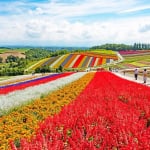
Where will you go for the summer vacation? Introducing recommended spots for domestic travel
-
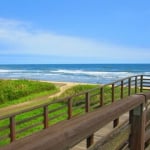
Carefully Selected Sightseeing Spots in Hokota, Ibaraki! Recommended Spots on Both Sea and Land
-
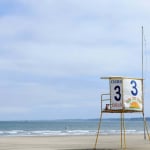
[4-Day Weekend Outings] If You’re in Kanto, Here’s Where to Go! Prefecture-by-Prefecture Low-Crowd Spots
-
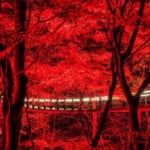
We introduce 5 recommended sightseeing spots in Takahagi City, Ibaraki Prefecture!
-
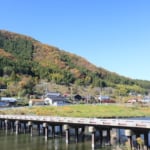
We will introduce 5 recommended sightseeing spots in Hitachiomiya City, Ibaraki Prefecture!
MOST POPULAR ON Ibaraki
-
 1
1Doha: Must-see Attractions in the Capital of Qatar
-
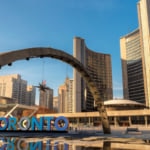 2
2Toronto: 10 Things to do in this Picturesque Canadian City
-
 3
3Amarillo: A City Famous for It’s Amazing Canyons, Great History and Music
-
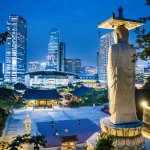 4
4South Korea: Dazzling Scenery, Rich Culture and Fascinating History
-
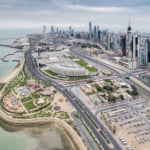 5
5Kuwait: A Country in Middle East Asia Famous for Hot Sand Dunes and Stunning Cityscape

